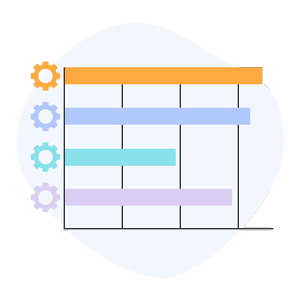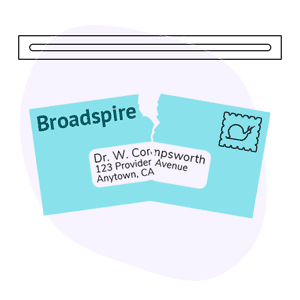Data: e-EOR Compliance Rates

To facilitate electronic billing for workers’ comp, California requires all claims administrators to respond to provider e-bills with electronic EORs (e-EORs). Within 15 working days of receiving the provider’s e-bill, the claims administrator must send the e-EOR in the mandated ANSI X12 835 format.
With the exception of CorVel, claims administrators lack the technology to comply with the e-EOR requirement. For that reason, claims administrators employ clearinghouses to accept and respond to e-bills on the claims administrator’s behalf, including sending the required e-EOR.
Below, we share cumulative data demonstrating claims administrators’ compliance (or rather, lack thereof) with this important e-EOR regulation.
Because the clearinghouse sends the X12 835 to providers, the compliance rates below are listed by clearinghouse (plus CorVel), rather than by individual claims administrators. However, we must note that it is always the claims administrator’s legal responsibility to ensure the provider receives e-EORs, even when doing so through a clearinghouse.
As the data below show, compliance rates are generally dismal, with Availity in particular returning timely, compliant e-EORs exactly 0% of the time.
Read on for overall compliance rates by all claims administrators billed by daisyBill providers, through all four clearinghouses and CorVel.
Compliance Data by Clearinghouse
Within 15 working days of receiving a provider’s e-bill, the claims administrator must send the provider the e-EOR in the mandated X12 835 format. For each clearinghouse and CorVel, below is internal daisyBill data showing claims administrators’ collective rates of compliance with sending daisyBill providers timely, compliant e-EORs.
The table shows compliance for e-bills submitted by providers between 1/1/2022 and 4/30/2022 as follows:
- Clearinghouse: The entity used by claims administrators to accept e-bills from providers; as noted below, CorVel is a claims administrator that does not require a clearinghouse
- e-Bill Submission Count: The total number of original bill submissions and Second Review appeals daisyBill providers submitted to the clearinghouse/CorVel
- e-EOR (X12 835) Compliant Count: The number of e-bills to which the clearinghouse responded by sending the provider a compliant and timely e-EOR
- e-EOR (X12 835) Missing/Late Count: The number of e-bills for which the clearinghouse failed to return the e-EOR, or returned the e-EOR untimely
- e-EOR (X12 835) Compliance Rate: The percentage of e-bills to which the clearinghouse responded by sending the provider a compliant and timely e-EOR
Claims Administrator Compliance: 1/1/2022 to 4/30/2022
All data below reflects e-bills sent to the claims administrator from 1/1/2022 to 4/30/2022.
Clearinghouse |
e-Bill Submission Count |
e-EOR (835) Compliant Count |
e-EOR (835) Missing/Late Count |
e-EOR (835) Compliance Rate |
Jopari |
161,889 |
118,244 |
43,645 |
73% |
Data Dimensions (Formerly WorkCompEDI) |
203,905 |
116,954 |
86,951 |
57% |
Carisk |
33,428 |
21,397 |
12,031 |
64% |
Availity |
10,910 |
8 |
10,902 |
0% |
CorVel* |
40,332 |
28,249 |
12,083 |
70% |
Claims Administrator Compliance: Last 30 Days
All data below reflects e-bills sent to the claims administrator from 5/1/2022 to 5/31/2022 where an e-EOR (835) is due or received prior to the mandated due date.
Clearinghouse |
e-Bill Submission Count |
e-EOR (835) Compliant Count |
e-EOR (835) Missing/Late Count |
e-EOR (835) Compliance Rate |
Jopari |
22,323 |
17,211 |
5,112 |
77% |
Data Dimensions (Formerly WorkCompEDI) |
22,775 |
16,540 |
6,235 |
73% |
Carisk |
4,094 |
3,075 |
1,019 |
75% |
Availity |
1,037 |
0 |
1,037 |
0% |
CorVel* |
4,835 |
1,701 |
3,134 |
35% |
*Corvel is not a clearinghouse. CorVel is a claims administrator with proprietary technology that allows CorVel to accept e-bills directly from providers, and return the required 277 ACK and e-EORs (electronic Explanations of Review) to providers.
How e-EORs “Close the Loop” on e-Bills
In California, e-billing facilitates faster transactions and easier bill processing for both providers and claims administrators — but only if both sides adhere to the e-billing regulations promulgated by the Division of Workers’ Compensation (DWC).
The DWC requires the claims administrator to send the provider an e-EOR within 15 working days of receiving the e-bill from the provider, in the standardized X12 835 format. The e-billing workflow below illustrates how the X12 835 brings the billing and payment process to a close:
e-Billing software like daisyBill converts the X12 835 data into a legible EOR format that the provider can review, and if necessary, take action on to address improper denials or adjustments.
Most importantly, the e-EOR allows daisyBill software to automatically post payment to the e-bill, so the transaction is completed within our system.
Claims Administrators: Responsible for Clearinghouse Compliance
California law holds the claims administrator responsible for failures to comply with e-billing requirements, even if the fault lies with a clearinghouse, bill review, or other outside vendor.
According to the DWC Electronic Medical Billing and Payment Companion Guide:
Billing agents, electronic billing agents, third party administrators, bill review companies, software vendors, data collection agents, and clearinghouses are examples of companies that may have a role in electronic billing. Entities or persons using agents are responsible for the acts or omissions of those agents executed in the performance of services for the entity or person. [emphasis added]
For claims administrators that consistently fail to meet e-EOR requirements, daisyBill contacts the appropriate clearinghouse to address the problem, and if necessary, submits formal Audit Complaints against the claims administrator for systematic non-compliance.
daisyBill representatives will attend the 2022 California Coalition on Workers’ Compensation (CCWC) Annual Conference from June 8-10; we welcome conversations with any claims administrator representative who wishes to discuss the data presented here, or ask any questions regarding e-billing compliance.
daisyBill has the technology and expertise to make workers’ comp work better. Reach out to see how we can help your practice obtain fast, correct reimbursement for treating injured workers.
LET’S TALK
DaisyBill provides content as an insightful service to its readers and clients. It does not offer legal advice and cannot guarantee the accuracy or suitability of its content for a particular purpose.



.png)
.gif)